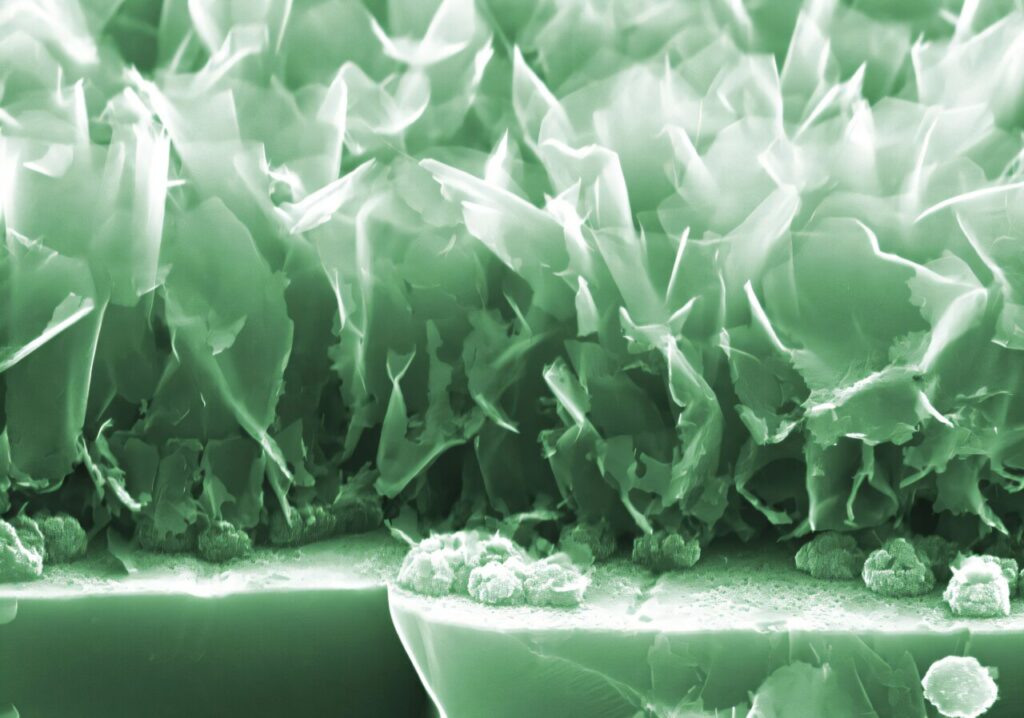Scientists from Skoltech, the Institute of Nanotechnology of Microelectronics, RAS, and other research centers have refined the understanding of how plasma treatment of carbon-based electrodes affects the key characteristics of supercapacitors. These are energy storage devices that complement batteries in electric cars, trains, port cranes, and elsewhere.
As scientists investigate the effects of various electrode modifications on capacitance, the toolkit for enhancing supercapacitor performance will expand and these devices will store more energy and find more applications. The findings are reported in Electrochimica Acta.
“Our team is investigating ways to improve the performance of devices known as supercapacitors by tinkering with the carbon-based material used in their electrodes,” the principal investigator of the study, Assistant Professor Stanislav Evlashin of Skoltech Materials, commented.
“Basically, there are two ways to increase the amount of energy a supercapacitor stores. Either you enhance the effective surface area of the electrodes by intricate surface design or you introduce foreign atoms into the carbon material of the electrodes. In this study, we made an advance in understanding the effect of foreign atom inclusion.”
Supercapacitors are energy storage devices often used in tandem with lithium-ion tech. Unlike conventional batteries, they deliver—or harvest—energy nearly instantaneously, so they can enable the quick burst of power required to lift a load, put a vehicle in motion, pull the brakes, etc.
Supercapacitors can handle wider temperature ranges, too. They also suffer little wear and tear, have a long service life and can considerably extend the lifetime of lithium-ion batteries.
Compared with metal-ion technology, supercapacitor failures pose no significant fire hazards. And the materials used are comparatively easy to dispose of in an environmentally friendly way.

Supercapacitors enable uninterruptible power supply for hospitals, data centers, and telecommunications equipment to ensure continuous service and avoid memory loss. The technology is also used to even out peak demand on the power grid. Supercapacitors have potential for Internet of Things sensors and communication devices, as well as wearable medical devices and portable electronics.
In electric and hybrid cars, supercapacitors are useful for starting up and stopping, as well as power steering. Working in conjunction with gasoline engines, supercapacitors promise faster charging for vehicle batteries. Electric vehicles in general and trains in particular could benefit from supercapacitors capturing the energy released in braking to boost overall efficiency.
The greater the capacitance of a supercapacitor, the more energy it can store. Skoltech researchers are studying the way foreign atom inclusion in the carbon material making up the electrodes of a supercapacitor affects capacitance.
-

A colored micrograph showing unmodified carbon nanowalls as seen with a scanning electron microscope. Credit: Stanislav Elvashin
-

A colored micrograph showing unmodified carbon nanowalls as seen with a scanning electron microscope. Credit: Stanislav Elvashin
-

A colored micrograph showing unmodified carbon nanowalls as seen with a scanning electron microscope. Credit: Stanislav Elvashin
In the recent study, the Skoltech team tested the effect of plasma of six chemical compositions on the capacitance of carbon nanowalls, a material used to make supercapacitor electrodes. Of those six compositions, only the mixture of nitrogen and argon proved suitable, modifying the material in a way that doubled its areal capacitance.
While this is in no way a record for such carbon-based electrode modifications, the results of the study shed light on the electrochemistry involved.
“We found that what happens first is that the amorphous carbon remaining after the growth of carbon nanowall structures is cleared away. This is followed by the formation of new defects and the incorporation of heteroatoms into the carbon material structure. Amorphous carbon, along with the heteroatoms of nitrogen, contributes to the occurrence of pseudocapacitance,” Evlashin said.


